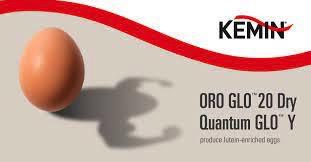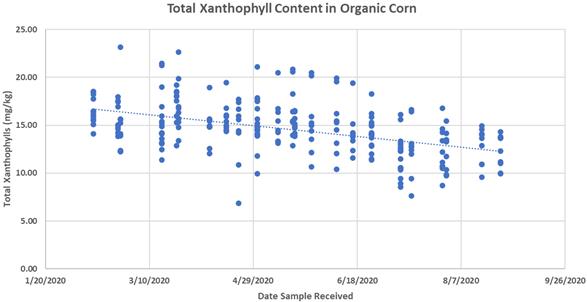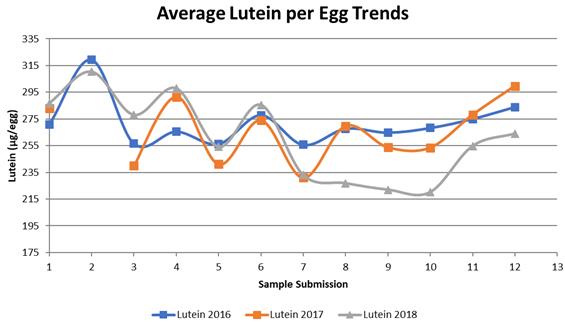 From mid-year onwards, old crop corn loses xanthophyll during storage as a result of oxidation promoted by high temperature and humidity. The net result is a decline in yolk pigmentation and lower lutein content of eggs.
From mid-year onwards, old crop corn loses xanthophyll during storage as a result of oxidation promoted by high temperature and humidity. The net result is a decline in yolk pigmentation and lower lutein content of eggs.
Kemin Customer Laboratory Services documented this decline in a survey of organic corn samples through 2020 (figure 1). Samples were analyzed for Total xanthophyll content throughout the storage period, which showed a loss in xanthophylls as the year progressed.

Figure 1. Decline of total xanthophyll content in organic corn samples
analyzed by Kemin Customer Laboratory Services in 2020. |
The intensity of yolk color can be assessed simply using a color-comparison fan or can be determined using photo-electronic equipment. Yolk color is a measure of organoleptic quality by consumers. Specialty brands continually monitor according to their standards and supplement diets to achieve a uniform and consistent color.
The color of the yolk relies on the xanthophyll content in the diet, so a supplemental source of xanthophylls is needed to reduce variability and promote the intensity of yolk color. Kemin Customer Laboratory Services analyzes customer samples for lutein content (figure 2). Lutein is critical to maintaining the integrity of the retina of the eye and thereby reduces the probability of developing macular degeneration. This egg producer routinely supplements the diet with additional pigmenter in the spring and summer months to prevent a decline in lutein levels and fan comparator scores in the summer months. In 2018, pigmenter levels were not increased, and a decrease in lutein in the summer months was documented.

Figure 2. Lutein trends in eggs analyzed by Kemin Customer
Laboratory Services over a period of three years.
|
Kemin operates laboratory assays for customers to monitor xanthophyll content, documenting progressively lower levels as the year progresses. Kemin supplies natural plant-derived xanthophyll pigments to supplement diets for both conventional and organic production.
For availability of pigmenters and technical assistance contact Roger Myers at roger.myers@kemin.com or (515) 462-6911.